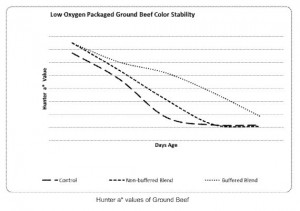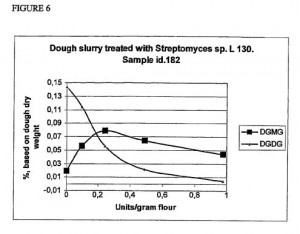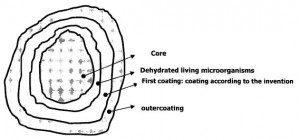Wilmington, DE, is the home base of E. I. du Pont de Nemours and Company, the American chemical production company which is more commonly known as DuPont.
DuPont is also focused on a wide array of innovative technologies, many of which aren’t forefront in the consciousness of many people and publications following innovation. Currently, the company is accepting entries for its 2015 DuPont Packaging Awards, which the corporation boasts is the longest-running awards ceremony in that industry since its inception in 1986. As we’ll see below, DuPont is also invested in developing its own packaging solutions. Recent innovations in DuPont’s Kevlar products for sporting equipment should receive more attention with the company’s decision to sponsor the January 2015 X Games Aspen. DuPont also maintains a particular focus on plant science and recent developments have increased the offerings of DuPont Pioneer’s EncircaSM Yield Nitrogen Management Service, which helps corn and soybean growers by providing planting prescriptions for field management.
In agrosciences, chemical engineering and other areas, DuPont is an industry leader backed up by a fairly strong patent portfolio. The corporation did not place among the top 50 U.S. patent assignees for 2014 as determined by IFI Claims, but in 2013 the company placed 32nd overall among all global patenting entities with 1,045 patents in that year. Interestingly, in recent months DuPont hasn’t received many patents, at least not since our column on this company, so although we haven’t repeated any patents here from our previous treatment, some of the patents below have been issued for many months now. It is probably too early to tell whether this is just a blip or if something more is afoot that would explain why DuPont fell from the IFI Claims list and isn’t showing as many patented innovations over recent months. In any event, in late December of last year, DuPont reached an agreement with competing agrosciences company Monsanto to drop lawsuits filed by each against each other for alleged seed processing patent infringement.
In other news, the corporation has recently been faced with turbulence posed by activist investor Nelson Peltz, who is seeking a number of seats on DuPont’s corporate board to force a corporate split of DuPont’s agriculture and nutrition business from its performance materials and electronics activities. Recently, Peltz was able to achieve some success in getting DuPont to divest some of its entertainment holdings when the company sold its 130-year old DuPont Theater in Wilmington in mid-January. DuPont has also been planning to create a company to handle the environmental liability of cleaning up around 190 contaminated sites at a cost which has been estimated at $300 million but could rise to $1 billion. While it is too early to know for sure, DuPont’s innovation output should be monitored to see if this corporate turbulence may be causing the company to lose its innovative focus.
[Bio-Pharma]
DuPont’s Patent Applications: From Anti-Foaming Foodstuffs to Preventative Probiotics
Plant science R&D at DuPont was the foundation for a couple of patent applications that we noted in our most recent survey of this company’s innovations, so we felt that we should share at least one. U.S. Patent Application No. 20140366218, entitled Soybean BB13 Promoter and Its Use in Embryo-Specific Expression of Transgenic Genes in Plants, claims a recombinant DNA structure containing a specific nucleotide sequence or a nucleotide sequence having at least 90 percent sequence identity according to the specified sequences claimed; the recombinant DNA structure is operably linked to at least one heterologous sequence. This innovation for genetically modified soybean plants involves the use of a promoter DNA sequence that can impact embryo plants by enhancing marketable traits, such as yield improvement, drought resistance, disease resistance and more.
One of DuPont’s subsidiaries, DuPont Nutrition Biosciences ApS, was responsible for a great many patent applications which were recently published by the USPTO. Some of the company’s research and development aims are focused on creating food products, as we saw when we inspected U.S. Patent Application No. 20140363552, which is titled Controlling Heat Induced Foam Generation of Foodstuff. The invention involves a composition which is produced and added to a foodstuff to serve as an anti-boil composition, reducing foam created by the foodstuff when it is heated. The patent application claims a method of controlling a degree of heat  induced foam generation in a foodstuff system by adding a composition containing polyglycerol polyricinoleic acid and heating the foodstuff system to a level that foam generation would have occurred without the composition. Another DuPont Nutrition Biosciences food product is at the center of U.S. Patent Application No. 20140335245, filed under the title Meat Product. The meat product claimed here is comprised of uncooked meat, extract from acerola berry (Malpighia emarginata) and extract from green tea. The resulting meat product is designed to provide an economical and natural preservative system to prevent discoloration in uncooked meat products while they are stored prior to retail sale.
induced foam generation in a foodstuff system by adding a composition containing polyglycerol polyricinoleic acid and heating the foodstuff system to a level that foam generation would have occurred without the composition. Another DuPont Nutrition Biosciences food product is at the center of U.S. Patent Application No. 20140335245, filed under the title Meat Product. The meat product claimed here is comprised of uncooked meat, extract from acerola berry (Malpighia emarginata) and extract from green tea. The resulting meat product is designed to provide an economical and natural preservative system to prevent discoloration in uncooked meat products while they are stored prior to retail sale.
Biosciences being pursued by DuPont’s subsidiary also extend into the realm of health care and preventative medical products. A product that targets pediatric respiratory diseases is the focus of U.S. Patent Application No. 20140356329, entitled Probiotic for Use in Reducing the Incidence and Duration of Illness. This claims a culture of L. acidophilus for reducing the risk of respiratory illness in children when the culture is administered to a child. The invention is intended to address the socio-economic burdens of caring for children suffering from common respiratory illnesses by providing a preventative probiotic product effective at reducing the severity of respiratory illness. A similar kind of probiotic has also been developed for the treatment of heart conditions related to diabetes, outlined within U.S. Patent Application No. 20140348796, which is titled Bifidobacteria for Treating Diabetes and Related Conditions. The patent application claims a method of treating myocardial infarction in a mammal ingesting a high-fat diet by administering a probiotic bacterium of the genus Bifidobacterium. This innovation could pose as a therapeutic treatment for certain cardiovascular diseases, such as coronary heart failure or angina, and could be suitable for addition to human food, poultry feedstock or pet food.
As we mentioned above, we had noticed some DuPont innovation in the field of product packaging within U.S. Patent Application No. 20140311099, filed under the title Packaging Containing Oxygen Scavenging Compositions. This patent application would protect substances for laminated packaging material to reduce the reactivity of oxygen with oxygen-sensitive package contents to reduce oxidation and improve the shelf life of products; this particular innovation improves on past oxygen scavengers by remaining inactive until a food product is sealed within a container. The oxygen scavenging composition claimed includes a sparingly soluble sulfite salt, an acidifying compound and, optionally, a hygroscopic compound, one part of which can be mixed with 100 parts water to produce a mixture with a pH ranging from 2 to 7. Paper, not plastic, laminates are featured within U.S. Patent Application No. 20150000852, titled Dispersions Made From Treating Inorganic Particles for Making Decor Paper Having Improved Optical Performance. The patent application claims a dispersion making decor paper with improved optical performance without degrading mechanical performance. The dispersion is made up of a TiO2 slurry with a cationic polymer and a treated TiO2 particle, paper pulp and another cationic polymer which is compatible with the cationic polymer in the slurry. This dispersion containing titanium dioxide is designed for use in the production of white and lightly colored paper laminates that improve the cost-effective nature of achieving the proper opacity in these paper laminates.
[Companies-1]
Issued Patents of Note: Plenty of Food Production Patents and Sugar Beet Extract De-Icer
Easily administered probiotics for the treatment of respiratory conditions have also been protected for DuPont through the issue of U.S. Patent No. 8936928, which is titled Probiotics for Use in Reducing Eosinophilia and Respiratory Allergies. The patent protects a method for reducing inflammation and/or eosinophilia associated with exposure to birch pollen by administering a composition containing both Lactobacillus acidophilus and Bifidobacterium lactis. This probiotic, which can be administered nasally, is designed to reduce allergic reactions to birch tree pollen, one of the most frequent initiators of tree pollen allergies.
 Substances for use in various food production processes were also featured in a couple of patents that caught our attention today. An enzyme providing emulsifier characteristics for bread baking processes without resulting in an unnecessarily high free fatty acid content is disclosed and protected by U.S. Patent No. 8889371, issued under the title Lipolytic Enzyme: Uses Thereof in the Food Industry. The patent claims a method of preparing a lysoglycolipid by treating a substrate containing a glycolipid with a lipolytic enzyme, obtainable from the genus Cornyebacterium, that has glycolipase activity. This enzyme can also work to reduce free fatty acids, which can cause odd odors or flavors in eggs or dairy products, where excess free fatty acids can give off a soapy taste. The extraction of sugars from syrups and other substances is featured within U.S. Patent No. 8921541, which is titled Separation Process. The process for separating and recovering a monosaccharide sugar from a solution containing a sugar claimed here involves nanofiltering the solution to create a nanofiltration permeate enriched with monosaccharide, collecting the permeate in more than one fraction, each fraction differing in monosaccharide sugar content, and recovering sugars from at least one of the fractions through crystallization. This technology enables the collection of monosaccharide sugars like fructose or glucose from plant-based biomass or pulping liquor created through sulfite processes. Dairy fermentation processes using a genetically modified strain of bacteria to create improved cultured products are explained within U.S. Patent No. 8771766, entitled Genetic Cluster of Strains of Streptococcus thermophilus Having Unique Rheological Properties for Dairy Fermentation. The strain of S. thermophilus claimed has a CRISPR locus, a specific nucleotide sequence and which ferments milk to a certain viscosity. This invention is designed to produce fermented milks for yogurt products that have a low ropiness with a high viscosity.
Substances for use in various food production processes were also featured in a couple of patents that caught our attention today. An enzyme providing emulsifier characteristics for bread baking processes without resulting in an unnecessarily high free fatty acid content is disclosed and protected by U.S. Patent No. 8889371, issued under the title Lipolytic Enzyme: Uses Thereof in the Food Industry. The patent claims a method of preparing a lysoglycolipid by treating a substrate containing a glycolipid with a lipolytic enzyme, obtainable from the genus Cornyebacterium, that has glycolipase activity. This enzyme can also work to reduce free fatty acids, which can cause odd odors or flavors in eggs or dairy products, where excess free fatty acids can give off a soapy taste. The extraction of sugars from syrups and other substances is featured within U.S. Patent No. 8921541, which is titled Separation Process. The process for separating and recovering a monosaccharide sugar from a solution containing a sugar claimed here involves nanofiltering the solution to create a nanofiltration permeate enriched with monosaccharide, collecting the permeate in more than one fraction, each fraction differing in monosaccharide sugar content, and recovering sugars from at least one of the fractions through crystallization. This technology enables the collection of monosaccharide sugars like fructose or glucose from plant-based biomass or pulping liquor created through sulfite processes. Dairy fermentation processes using a genetically modified strain of bacteria to create improved cultured products are explained within U.S. Patent No. 8771766, entitled Genetic Cluster of Strains of Streptococcus thermophilus Having Unique Rheological Properties for Dairy Fermentation. The strain of S. thermophilus claimed has a CRISPR locus, a specific nucleotide sequence and which ferments milk to a certain viscosity. This invention is designed to produce fermented milks for yogurt products that have a low ropiness with a high viscosity.
 Microorganisms used for a variety of product preparation processes, from food to consumer healthcare, are discussed within U.S. Patent No. 8834853, which is titled Coated Dehydrated Microorganisms With Enhanced Stability and Viability. The patent protects a coated dehydrated microorganism where the coating is comprised of at least 25 percent hygroscopic salts, has a pH ranging from 5.5 to 7.9 and improves the viability and stability of the bacteria it coats. The innovation is intended to enable microorganism activity to be retained in various products without being damaged by secondary production processes or long term storage.
Microorganisms used for a variety of product preparation processes, from food to consumer healthcare, are discussed within U.S. Patent No. 8834853, which is titled Coated Dehydrated Microorganisms With Enhanced Stability and Viability. The patent protects a coated dehydrated microorganism where the coating is comprised of at least 25 percent hygroscopic salts, has a pH ranging from 5.5 to 7.9 and improves the viability and stability of the bacteria it coats. The innovation is intended to enable microorganism activity to be retained in various products without being damaged by secondary production processes or long term storage.
Finally, we were also intrigued by an inventive product involving sugar beet extract meant to act as a de-icing agent for roads and other surfaces. U.S. Patent No. 8747692, titled Substance Composition and Method for Melting Ice and Preventing Slipperiness and Use of Betaine for Melting Ice and Preventing Slipperiness, claims a substance composition that contains betaine, which makes up from 10 percent to 33 percent of the composition, and another ice-melting agent. The invention provides a liquid ice-melting agent using betaine, an extract of sugar beet, accompanied by anti-skid properties enabled by an additional solid ice-melting agents in the composition, which has applications at airports, bridges, ramps and stairs.

![[IPWatchdog Logo]](https://ipwatchdog.com/wp-content/themes/IPWatchdog%20-%202023/assets/images/temp/logo-small@2x.png)


![[Advertisement]](https://ipwatchdog.com/wp-content/uploads/2024/04/Patent-Litigation-Masters-2024-sidebar-700x500-1.jpg)

![[Advertisement]](https://ipwatchdog.com/wp-content/uploads/2021/12/WEBINAR-336-x-280-px.png)
![[Advertisement]](https://ipwatchdog.com/wp-content/uploads/2021/12/2021-Patent-Practice-on-Demand-recorded-Feb-2021-336-x-280.jpg)
![[Advertisement]](https://ipwatchdog.com/wp-content/uploads/2021/12/Ad-4-The-Invent-Patent-System™.png)






Join the Discussion
No comments yet.